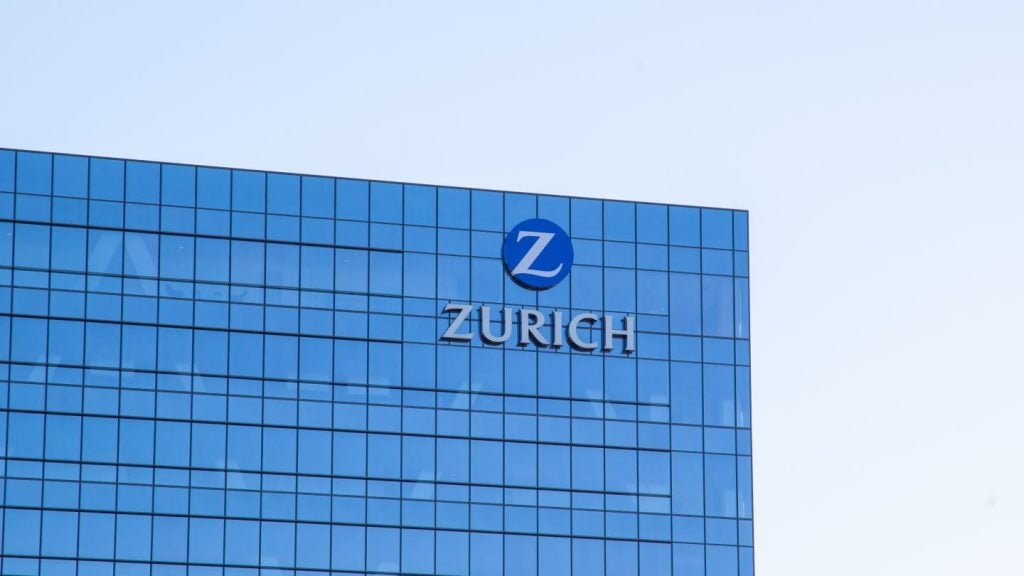
While its GDP did grow by 8.4% in 2011, Hungary saw slower growth than other Central and Eastern European (CEE) countries, mainly due to the global financial and eurozone debt crises. Due to the subdued economic environment and domestic demand, the industry’s written premium value declined to HUF790.1 billion (US$3.5 billion) in 2013. The country’s overall insurance penetration rate also fell steadily from 3.2% in 2009 to 2.7% in 2013.
The Hungarian insurance industry is regulated by the Hungarian Financial Supervisory Authority. The regulator had originally planned to implement Solvency II by 2013 to improve the industry’s financial position, although they are now only likely to be implemented by 2016. Adoption of the directive is expected to encourage qualitative changes in insurers’ risk management, and to introduce new capital requirements, which is, in turn, expected to increase costs.
The impact of the eurozone crisis on the insurance industry was most severe during 2008-2009. The overall written premium of the insurance industry decreased from HUF811.6 billion (US$4.0 billion) in 2009 to HUF790.1 billion (US$3.5 billion) in 2013.
In 2013, however, the Hungarian government took major steps to fight the recession and the external debt crisis by adapting a new credit-based economic policy, which comprises both traditional and innovative measures. After its implementation, the economy improved, and there was a sharp decline in public debt.
With a 54.9% share of total premiums in 2013, life insurance was the largest segment within the industry at HUF433.7 billion (US$1.9 billion), followed by non-life insurance with 41.7% or HUF329.3 billion (US$1.5 billion), and personal accident and health with 3.4%, or HUF27.1 billion (US$0.1 billion). The value of the non-life segment declined, while the life and personal accident and health insurance segments recorded moderate growth. This was supported by increased demand and recovery in the travel insurance category.
Within the life segment, endowments accounted for 18.9% or HUF82.1 billion (US$367.4 million) in 2013, while the term life category recorded a written premium of HUF29.04 billion (US$130.0 million).
However, market penetration is falling: life insurance penetration decreased from 1.60% in 2009 to 1.50% in 2013. Life insurance density decreased from 0.30 policies per capita in 2009 to 0.25 in 2013. This has happened against the backdrop of a shrinking population: Hungary’s population declined from 10.01 million in 2009 to 9.94 million in 2013, a trend set to continue.
Another concern is poverty. According to a 2013 survey from the research institute Tarki, 17.7% of Hungarian citizens lived in households where social disenfranchisement, unemployment and poverty prevailed; 19.1% of the population is classified as working poor and 36.7% lived under material circumstances of severe deprivation. According to the statistics from the Central Statistics Office (KSH), the Hungarian poverty rate stood at 32% in 2011.
The life segment received support from the increased sale of individual life, term-linked life, and endowment products. While term life products registered a CAGR of 18.2% in 2009-2013, individual life products registered a CAGR of 7.4%. The written premium for term life products increased from HUF14.9 billion (US$0.07 billion) in 2009 to HUF29.0 billion (US$0.13 billion) in 2013.
Price competition between the leading Hungarian insurance providers is strong. In 2012, there were 45 insurance companies, of which 22 were operating in the life insurance segment and 23 were providing non-life insurance; foreign insurers lead the industry.
Moreover, Hungary’s life insurance segment is highly consolidated, and its top 10 companies accounted for 83.8% of total written premiums in 2012. ING Biztosító leads with a 16.4% share of gross written premium in 2012. Other life insurance providers include Allianz Hungária Biztosító, Groupama Garancia Biztosító, Generali-Providencia Biztosító, and Magyar Posta Életbiztosító, with 10.6%, 10.4%, 9.4% and 9.0% respectively.
The government, the Hungarian Insurers Association (MABISZ), the Hungarian Financial Supervisory Authority and the European Commission originally planned to implement Solvency II in 2013, although this has been postponed. New regulations are expected to help increase penetration, as a result of improved transparency. The regulations are also expected to give ratings agencies, policyholders, brokers and investors a better understanding of insurance products and an enhanced, uniform level of protection to policyholders.
Distribution channels
Life insurance products in Hungary are distributed through a variety of channels, including agencies, bancassurance, direct marketing, e-commerce and insurance brokers.
Agencies were the leading distribution channel in 2013, accounting for 45.2% of the gross written premiums for new business. The written premium for new business through agencies increased from HUF43.3 billion (US$214.0 million) in 2009 to HUF59 billion (US$263.1 million) in 2013. ING Insurance International, for example, has a life insurer operating in Hungary under the name ING Biztosító. The company’s main distribution channels include tied agents, which market products by giving professional advice to customers.
Direct marketing was the second largest distribution, accounting for 24.9% of gross written premiums for new business, while written premiums for new business through direct marketing increased from HUF23.0 billion (US$113.9 million) in 2009 to HUF32.4 billion (US$145.1 million) in 2013. Hungarians also used the internet or telephone to purchase individual life insurance cover and group insurance schemes. Companies such as Allianz introduced online solutions, enabling users to compare and buy products. This form of selling proved beneficial in terms of cost cutting, while saving time for customers and allowing them to research offerings.
Bancassurance was the third largest distribution channel, contributing 24.1% of the segment’s written premium in 2013, primarily driven by Hungarian banks’ strong competitive advantage on account of their branch networks and client relationships. In 2008, life insurers such as Groupama Garancia Insurance made distribution agreements with OTP Bank, the largest bank in Hungary, in terms of customer base. Erste Vienna Insurance Group Biztosító formed a partnership with Erste Bank to sell life products through Erste Bank’s Hungarian branches. Another company operating in the Hungarian life insurance segment, Axa Biztosító, markets products through its own subsidiary, as well as intermediaries such as banks and brokers.
E-commerce and brokers were the fastest growing channels. This was primarily due to the ease of online operations, and the industry expertise of brokers. Rising internet penetration also helped growth.
Key Industry Trends and Drivers
During 2008-2009, Hungary’s economy was severely affected by the eurozone crisis, with the country facing much external debt due to being heavily dependent on foreign countries for credit. The economy began to recover slowly in 2013, supported by a strongly credit-based economic policy designed to avoid economic recession and social instabilities. Some of the key drivers supporting the growth of the life segment are:
Low penetration
The life insurance penetration rate stood at 1.4% in 2012 – lower than in other European countries such as Germany and Poland, which had respective penetration rates of 3.3% and 2.2%. In 2013, Hungary’s penetration rate increased slightly to 1.5%. The low penetration rate offers opportunities to capture the untapped market.
Increased life expectancy and ageing population
By 2025, 40% of the population will be 65 or older. In 2013, 1.7 million people were over the age of 65 (17.5% of the population). In 2007, pension spending in Hungary was higher than in other Western EU nations, amounting to 10% of GDP. This is expected to increase to over 15% by 2025, according to the World Bank. Meanwhile, the average life expectancy increased from 74.2 years in 2009 to 75.2 years in 2013, and is expected to reach 76.1 years by 2017.
Agencies dominate distribution
Agencies are the most popular distribution channel Aegon Magyarország Biztosító (Aegon), a life and property insurance company, distributes via agents, direct marketing, brokers and banks. The emergence of international companies has led to the launch of several new life insurance products. ING Insurance International, for example, operates in Hungary under the ING Biztosító name and offers a range of products such as unit-linked, term and whole life, and individual endowment insurance. Its main distribution channel consists of tied agents, and the group plans to expand to multi-channel distribution with banks and brokers.
Rise in number of internet subscribers to spur growth
Many insurance companies are opting for online distribution channels, as they are both cost-effective and time-efficient. The total number of Hungarian internet subscribers rose from 6.2 million in 2009 to 7.4 million in 2013 and is expected to reach 8.5 million in 2013, which supports demand for the e-commerce distribution channel.
Marketing strategies and consumer-centric products
Insurers in Hungary have adopted various product marketing strategies that have led to greater demand for insurance. Aegon, for example, introduced a term life insurance product for private individuals and corporate officials, and the company offers flexible and customized life products. ING Biztosító has focused on product and service innovation. Its strategy includes transforming its role in life insurance and building long-term relationships with its customers. Innovative product and marketing strategies such as these will encourage consumers to opt for life insurance products and drive growth.
Economic growth and growing employment
The increase in the overall employment rate is one of the important drivers for life insurance. Around 56% of people aged 15-64 years have a paid job, and the overall employment rate stands at 52.6%. While this is well below the Organization for Economic Co-operation and Development (OECD) average of 66%, unemployment is on a downwards trend, from 10.0% in 2009 to 9.9% in 2013, and is expected to reach 9.1% in 2017. Conversely, GPD per capita is growing: at current prices, it rose from HUF2.6 million (US$12,654) in 2009 to HUF2.9 million (US$12,964) in 2013, and is expected to reach HUF3.5 million (US$16,485) in 2017. Both factors should support demand.
New credit-based economic policy
The eurozone crisis spurred the government to adopt a new credit-based economic policy in 2013, which combines traditional and innovative measures. This helped the economy to recover, with growth supported by reduced public debt and stability in the budget deficit at below 3% of GDP. During 2013, the GDP at constant prices expanded by 1.8%, and growth was projected at 2.0% in 2014. This growth is further expected to reach 2.2% in 2017. The economic section of the new civil code aims to support foreign and domestic investors and create opportunities for entrepreneurs and businesses by establishing a stable business environment, as well as mitigate risks associated with businesses.
Challenges
The industry is expected to face a number of challenges due to the structural reforms. Life insurers will need to boost product efficiency to increase insurance penetration, while the abolition of tax benefits for life insurance products will reduce demand. For non-life insurers, challenges such as the implementation of an insurance premium tax, compulsory accident tax, and the adoption of gender-neutral products are expected to create a challenging environment. Furthermore, with low capital availability from banks, due to the implementation of foreign-exchange loan schemes and an overall slowdown in the economy, insurers are expected to have difficulty in meeting capital requirements.
The life segment is expected to value HUF560.2 billion (US$2.7 billion) in 2018, recording a forecast period CAGR of 5.3%. Increased foreign participation, a rising demand for retirement-related products and the development of unit-linked products are all expected to provide support; low income levels and poverty will remain challenges.







